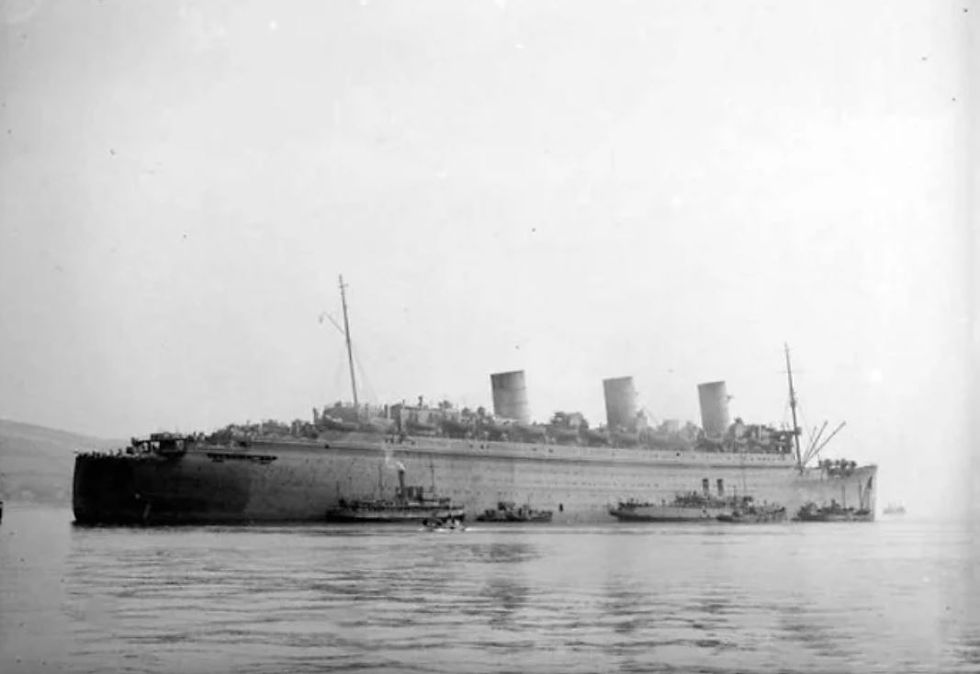The RMS Queen Mary was not designed for war.
When she entered service in 1936 she was the fastest and most luxurious cruise liner in existence. But with the outbreak of war, and the world's seas full of nasty U-Boats, the demand for luxury cruises reduced somewhat - leaving the pride of Cunard languishing in a New York harbour.
Pretty quickly she was painted a rather fetching shade of grey and swapped her fashionable interior for thousands of bunks to transform her into the mother of all troop carriers. She could carry 15,000 troops with ease and, once up to speed no U-Boat could keep up.
Her new paint job gave rise to the nickname 'the grey ghost' and her ability to continually feed the Allied war machine with fresh meat from all corners of the globe started to annoy a certain Nazi Fuhrer who offered a cash reward and many medals to the man who sent her to the bottom of the sea.

In the wide expanses of the Atlantic or Pacific, such threats were no bother to the crew of the Queen Mary - she could out-run pretty much any enemy threat. But when she entered British waters it was a different matter. She had to slow right down which put her at risk from attack from both U-Boats and long-range Luftwaffe bombers. Not ideal.
Hence it was not unusual for her to travel the final leg of her journey in Britain under cover of escort - just in case things kicked off.
On 2nd October, 1942 in one such protective rendezvous, the Queen Mary, carrying 15,000 men of the US 29th Division to Britain, met up with the anti-aircraft cruiser, HMS Curacao, off the Irish coast as she made her way to Gourock on the Firth of Clyde.
HMS Curacao was a bit long in the tooth by 1942, having originally entered service in 1918 - and only had a top speed of 25 knots. Knowing this, the captain, John Boutwood, took up station way in front of the oncoming troop ship and radioed through to the Queen Mary that he would slide in behind her as she passed through.
That seemed like a sensible plan, but what happened next was to be one of the most tragic accidents of the whole war.

U-Boats had already been sighting in the area and all crews were on high alert. Normal procedure in the presence of a Wolf-Pack was to zig-zag - which both HMS Curacao and the Queen Mary duly did. This made judging distances and speed pretty tricky and nether Captain was sure exactly what the other one was doing. The two vessels got far too close to each other and the inevitable happened - the paths of their zig-zags intersected and the he Queen Mary sliced the cruiser in two like a piece of butter, straight through the six inch armoured plating. The liner's crew and passengers barely registered a bump.
The tragedy didn't stop there, however. As U-Boats were known to be patrolling this area, all Allied vessels were under strict orders not to stop for any reason for fear of attack. The Queen Mary steamed right through HMS Curacao and didn't look back. The crew of the stricken cruiser were simply left to their fate.
Out of 437 crew, only 99 survived.

Comments